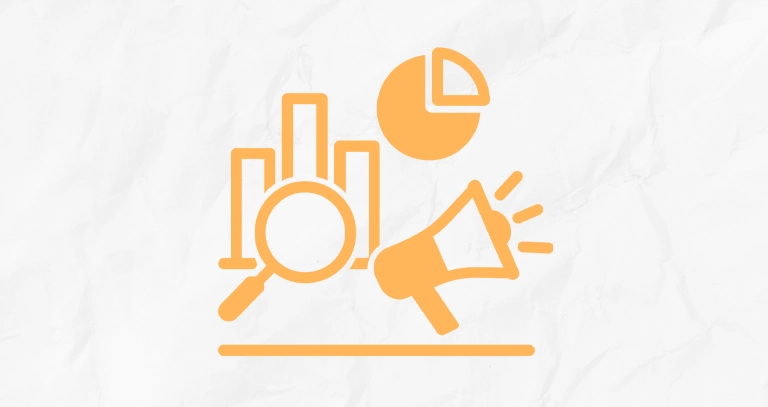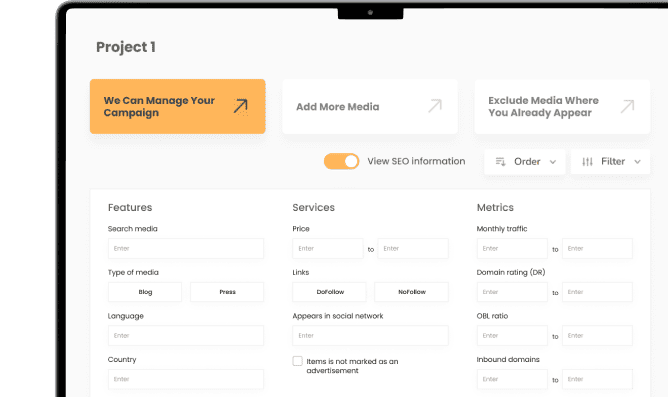One of the most effective ways to capture journalistic attention is by providing simple but relevant data, gathered through surveys or small internal studies. From our experience at Growwer, we know that you don’t need to invest huge budgets in research to generate media coverage. What really matters is delivering clear, useful, and easy-to-cite figures.
In this article, we’ll show you how to leverage surveys and simple studies to get mentions in the media, improve your online reputation, and strengthen your link building strategy.

Why simple data attracts journalists
Journalists are constantly searching for information that helps them put their stories into context. A specific statistic has the power to add credibility, provide a fresh angle, or strengthen a headline.
What makes simple data so appealing is its ability to be quickly understood, easily quoted, and directly connected to a real audience interest.
Instead of lengthy reports spanning dozens of pages, a straightforward data point, such as a percentage on consumer preferences or a behavioral trend, may be enough for a media outlet to use in its coverage. The key is ensuring the data is useful, timely, and clear enough to avoid the need for complex explanations.
Types of data that generate media coverage
Not all data carries the same media potential. The ones that work best are usually tied to current events or reveal unexpected trends.
For example, a survey of public opinion on a social issue can become news if it shows a shift in attitudes or confirms widespread assumptions. An internal micro-study from a company, showing variations in how a service is used by different demographics, can also spark journalistic interest.
Likewise, behavioral data from customers or users, presented in aggregate form and with privacy safeguarded, often attracts attention because it provides an authentic picture of market reality. Even seemingly modest figures, such as a 20% increase in demand for a specific product, can open the door to a strong headline.
How to design effective surveys and studies
Designing an effective survey doesn’t require advanced statistical techniques. The most important thing is to ask relevant questions that connect with current topics or with the real interests of your audience.
The sample size is also a key factor. You don’t need thousands of responses, but you should reach a sufficient number to provide credibility. In many cases, around 300 well-distributed responses in an online survey can be more than enough.
Transparency is another essential element. Explaining how the data was collected, what methodology was used, and during what period the study was conducted helps build trust with both journalists and readers. A number without context loses impact, while a figure supported by a brief explanation strengthens its legitimacy.
Presenting results in attractive press releases
The way results are presented is just as important as the data itself. A press release should be clear, direct, and easy to digest. The headline plays a decisive role: starting with a striking percentage or a surprising finding increases the chances that a journalist will pay attention.
The structure matters too. The first paragraphs should immediately summarize what was discovered, how it was obtained, and why it is relevant. The methodology can be detailed in a secondary section, but the main findings should always come first.
Visuals are another useful ally. While not mandatory, a simple chart or infographic can make a difference, as it helps the data stick and makes it easier for the media to reuse. For example, saying “we published a study about reading habits” is less effective than stating “72% of young people prefer reading digitally over print.” The latter makes the data newsworthy on its own.
Tips for gaining media coverage with your own data
Having good data is the first step; getting it into the right hands is the second. To increase your chances of success, it’s crucial to target and select the journalists or media outlets most interested in your topic.
Timing also makes a difference. A survey about holiday shopping habits released in November is much more likely to be picked up than one launched in spring. Aligning your release with the editorial calendar multiplies its impact.
Sometimes offering exclusivity can be a smart move. Allowing a major outlet to publish your results first often creates a ripple effect, leading to coverage in other channels. At Growwer, we’ve seen even large media outlets value small surveys if the approach is timely and the data offers a fresh angle.
Benefits for link building and online reputation
Beyond being featured in the media, original data has strategic value for any digital marketing plan. When a media outlet cites your study, it usually includes a link back to your site as the source. That link not only strengthens your authority in Google’s eyes but also boosts your reputation as an expert in your field.
This kind of coverage delivers benefits on three levels: natural link building from the publication, stronger brand credibility, and referral traffic from established media audiences. When combined, these effects mean that even a simple survey can generate a return far greater than the effort invested.
Common mistakes when using data for digital PR
Not every attempt to generate media coverage with data succeeds, and many failures come from avoidable mistakes. The first is a lack of relevance: if the data doesn’t connect with a real audience interest or current event, it’s unlikely to attract media attention.
Another common mistake is manipulating results to make them more dramatic. Exaggerating figures or drawing conclusions unsupported by the data may create short-term impact but will damage your reputation if uncovered. Credibility is built on transparency, not tricks.
Finally, avoid presenting figures without context. A number in isolation loses impact if you don’t explain how it was obtained or what it means. Journalists need data they can integrate into a story, which requires context, comparisons, or references.
Data is a universal language for the media, and the best part is you don’t need to be a major consultancy to generate compelling figures. A simple survey, an internal micro-study, or the aggregate analysis of your own users can become news and lead to mentions in press, quality backlinks, and a tangible improvement in your online reputation.
Our recommendation at Growwer is to start simple but strategic: choose a relevant question, collect responses transparently, and present the results with a journalistic approach. With these basic steps, you’ll see how your data can turn into media coverage and become a long-lasting asset for your brand.







